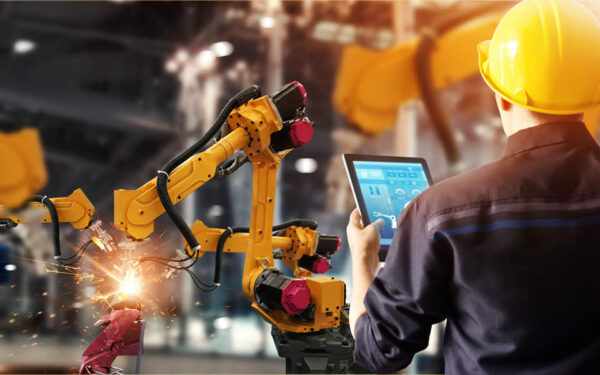Enterprise Risk Management and the Winds of Change
By Jonathan Shoop, Office Managing Partner, Downtown Cleveland
Pre-COVID, manufacturing companies were experiencing similar business challenges across sectors. The issues most often cited in past manufacturing surveys concerned the difficulty of hiring and retaining candidates, exacerbated by an aging workforce, fewer candidates available within the manufacturing industry, and a general perception that a career in manufacturing wasn’t desirable.
The Emergence of Unanticipated Risk
During COVID, manufacturing businesses in most U.S. states were deemed essential. They were able to continue operating to serve consumers and other businesses reliant on their products. Despite being deemed essential, most manufacturers needed to find ways to produce more with less or under certain potentially disruptive conditions. For some, that meant enforcing social distancing on the plant floor, shifts restricted to 6 hours rather than 8, fewer production employees on hand due to staggered shifts, and late in the COVID journey, supply chain and logistics issues that reduced the availability of raw materials, extending order-to-ship lead times and impacted on-time delivery.
The Response to Risk
Logistics costs fell in the second half of 2022, and supply-chain disruptions calmed. Many manufacturers were producing full-tilt to deliver high-quality products to their customers on time and within spec for months. Manufacturers worked through a tremendous backlog of orders to deliver successfully, and many had prosperous production and sales months during 2022 and 2023 when compared to budget, plan, or prior year levels.
Looking Ahead – New Risks Emerge and Old Risks Remain
In 2023, manufacturers, like all businesses, face a new challenge as they are mired in a high-inflation business climate not seen for 40 years. Inflation is drastically increasing production costs, while an aging workforce and insufficient talent pool continue to challenge operations. Despite that, many manufacturers have improved and today are able to make more with less.
According to our recent Marcum-Hofstra CEO Survey, 62% of respondents were at least somewhat concerned about the stability of their company’s bank, with 21% of those “very concerned.”
ERM and Rising to Meet Business Challenges
If COVID taught us anything, it’s that we are resilient, driven, and able to mitigate business challenges. That’s as true for the pandemic as it is for bank troubles and a tighter liquidity environment. But how can you plan or foresee the business challenges, internal or external, impacting manufacturing businesses in the future? That is where enterprise risk management (ERM) comes into play. ERM is meant to help companies see accurately, whether looking in the mirror (at internal issues) or out the window (at macro-economic issues). That means it can serve senior management in creating an internal strategic plan and key leaders in Operations, Finance, HR, IT, Marketing, Sales, and the Executive suite on the ERM committee as they collectively brainstorm and plan responses to potential business risks. After identifying the internal and external issues that could impact business, ERM participants individually score the risks identified from 1-Rare to 5-Almost Certain. The group then reconvenes to see which risks received the highest scores or are seemingly most likely to occur and institute action plans to prepare for and reduce the risk of these unfavorable business developments.
Before 2019, there were probably near zero ERM assessments that identified “global pandemic” as an Almost Certain business risk, but manufacturers have proven their ability to deal with business interruption nonetheless. So, think of planning for and reducing risk with an ERM process as an essential way to bake resilience and agility into the fundamental operation of your manufacturing business. If you have any questions about establishing an ERM program, we are here to help.



















